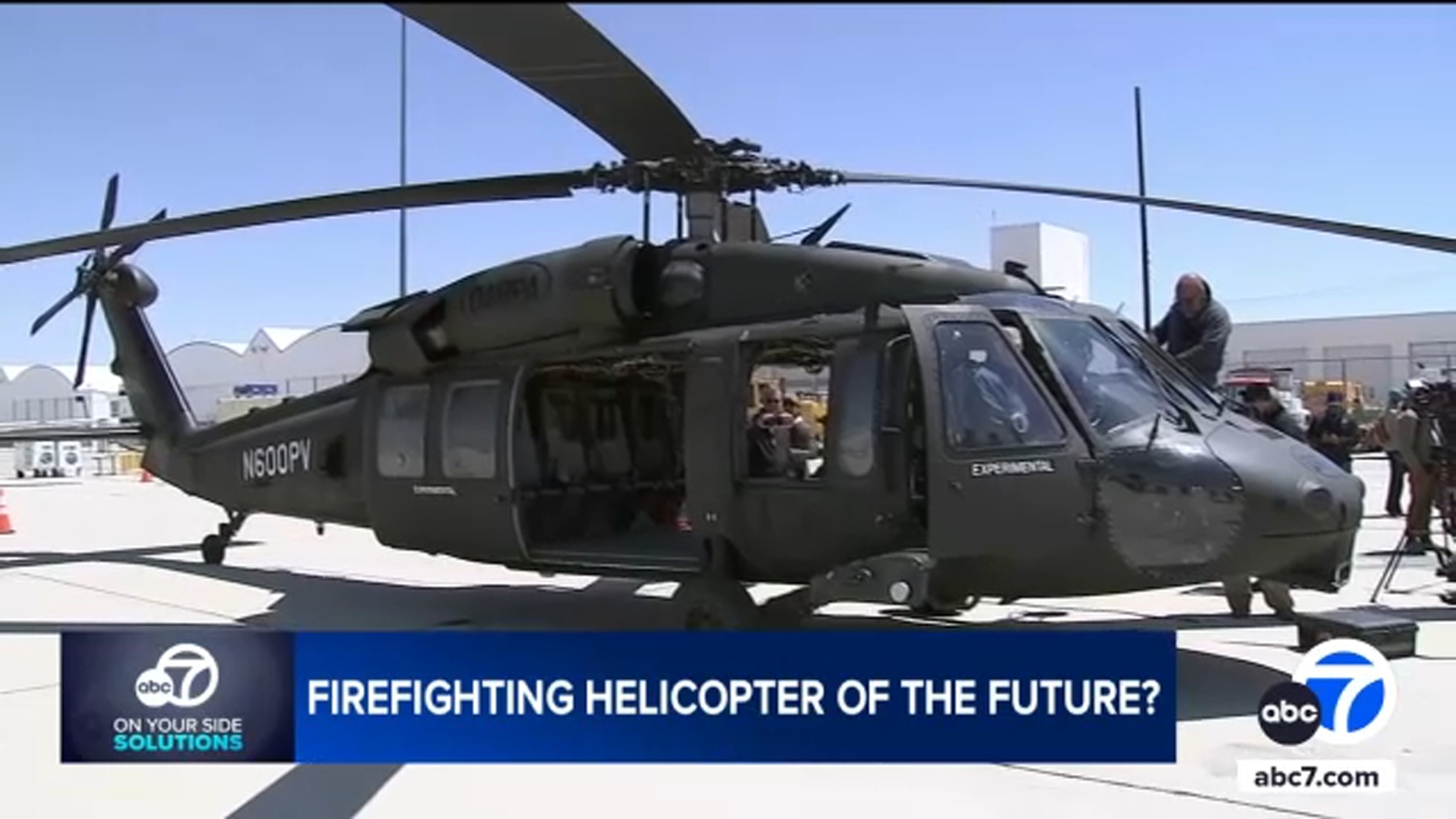Increased Firefighting Efficiency: The Promise Of Autonomous Helicopters

Welcome to your ultimate source for breaking news, trending updates, and in-depth stories from around the world. Whether it's politics, technology, entertainment, sports, or lifestyle, we bring you real-time updates that keep you informed and ahead of the curve.
Our team works tirelessly to ensure you never miss a moment. From the latest developments in global events to the most talked-about topics on social media, our news platform is designed to deliver accurate and timely information, all in one place.
Stay in the know and join thousands of readers who trust us for reliable, up-to-date content. Explore our expertly curated articles and dive deeper into the stories that matter to you. Visit Best Website now and be part of the conversation. Don't miss out on the headlines that shape our world!
Table of Contents
Increased Firefighting Efficiency: The Promise of Autonomous Helicopters
Wildfires are devastating events, causing widespread destruction and posing significant risks to human lives and the environment. The fight against these raging infernos demands rapid response and efficient resource management. Traditionally reliant on human pilots, firefighting efforts are now seeing a revolutionary shift with the introduction of autonomous helicopters. These unmanned aerial vehicles (UAVs) promise to significantly increase firefighting efficiency, offering a new level of precision and speed in battling wildfires.
The Limitations of Traditional Methods
Current firefighting strategies often involve a complex interplay of ground crews, manned aircraft, and aerial water drops. While effective, these methods face several limitations:
- Risk to Human Pilots: Flying low and slow amidst intense heat and unpredictable fire behavior poses significant danger to human pilots.
- Limited Operational Time: Manned aircraft have operational limitations dictated by pilot fatigue and daylight hours.
- Precision Challenges: Accurate water or retardant drops require skilled pilots, and even then, precision can be challenging in rapidly changing fire conditions.
- High Operational Costs: The cost of maintaining and operating manned aircraft, including pilot salaries and insurance, is substantial.
Autonomous Helicopters: A Game Changer
Autonomous helicopters, equipped with advanced sensors, AI-powered flight control systems, and sophisticated mapping capabilities, are poised to address these limitations. These UAVs can:
- Operate 24/7: Unconstrained by pilot fatigue or daylight limitations, autonomous helicopters can operate continuously, providing crucial support during critical night-time operations.
- Increase Precision: Advanced sensors and AI allow for highly precise water or retardant drops, maximizing their effectiveness and minimizing wasted resources.
- Reduce Risk: Eliminating the need for human pilots significantly reduces the risks associated with firefighting operations.
- Improve Situational Awareness: Real-time data collection and analysis enable better decision-making by ground crews and incident commanders.
- Cost Savings in the Long Run: While the initial investment in autonomous helicopters may be high, long-term operational costs are likely to be lower compared to manned aircraft.
Technological Advancements Fueling the Revolution
Several technological advancements are making autonomous firefighting helicopters a reality:
- Advanced Sensor Technology: High-resolution thermal cameras, LiDAR, and other sensors provide real-time data on fire spread, intensity, and terrain, enabling efficient navigation and targeted interventions.
- AI-Powered Flight Control: Sophisticated algorithms enable autonomous navigation, obstacle avoidance, and precise maneuvering in challenging environments.
- Improved Communication Systems: Reliable communication links ensure seamless data transfer and remote control, enabling effective coordination between autonomous helicopters and ground crews.
Challenges and Future Prospects
Despite the promising potential, challenges remain:
- Regulatory hurdles: The integration of autonomous helicopters into airspace requires robust regulatory frameworks and safety protocols.
- Technological advancements: Further development is needed to improve the reliability, autonomy, and operational range of these UAVs.
- Public acceptance: Building public trust and addressing concerns about safety and privacy are crucial for widespread adoption.
However, ongoing research and development are actively addressing these challenges. As technology continues to advance, we can expect autonomous helicopters to play an increasingly significant role in wildfire management, ultimately leading to safer, more efficient, and cost-effective firefighting operations. The future of wildfire suppression may well depend on the continued development and implementation of this promising technology. Learn more about the latest advancements in wildfire fighting technology by [linking to a relevant external resource, e.g., a research paper or government website].

Thank you for visiting our website, your trusted source for the latest updates and in-depth coverage on Increased Firefighting Efficiency: The Promise Of Autonomous Helicopters. We're committed to keeping you informed with timely and accurate information to meet your curiosity and needs.
If you have any questions, suggestions, or feedback, we'd love to hear from you. Your insights are valuable to us and help us improve to serve you better. Feel free to reach out through our contact page.
Don't forget to bookmark our website and check back regularly for the latest headlines and trending topics. See you next time, and thank you for being part of our growing community!
Featured Posts
-
 Inter Milans Thrilling 4 3 Victory Over Barcelona Tactical Analysis
May 08, 2025
Inter Milans Thrilling 4 3 Victory Over Barcelona Tactical Analysis
May 08, 2025 -
 U S Open Cup Orlando City Vs Tampa Bay Rowdies Starting Xi And Bench
May 08, 2025
U S Open Cup Orlando City Vs Tampa Bay Rowdies Starting Xi And Bench
May 08, 2025 -
 Leody Taveras Claimed By Mariners Impact On The Roster
May 08, 2025
Leody Taveras Claimed By Mariners Impact On The Roster
May 08, 2025 -
 Couple Alert Mallory And Dansby Swanson Announce Baby On The Way
May 08, 2025
Couple Alert Mallory And Dansby Swanson Announce Baby On The Way
May 08, 2025 -
 Cleveland Browns Rookie Shedeur Sanders Assigned Number 12
May 08, 2025
Cleveland Browns Rookie Shedeur Sanders Assigned Number 12
May 08, 2025
